You created a PRC in ENOVIA with the following instances
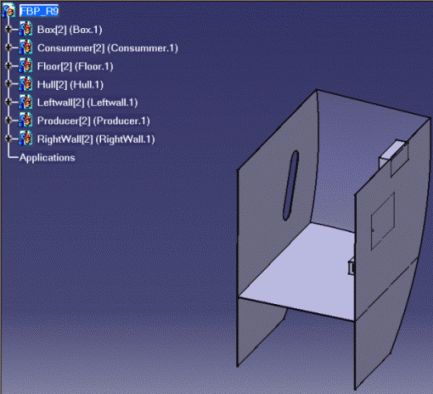
-
In CATIA, click Init Enovia V5 Connection...
 to establish a connection between CATIA V5 and ENOVIA LCA. (this
step is not necessary if the connection was automatically established)
to establish a connection between CATIA V5 and ENOVIA LCA. (this
step is not necessary if the connection was automatically established) -
In the ENOVIA Homepage panel, select the Engineering Life Cycle folder and double-click the Product Class Editor bookmark:
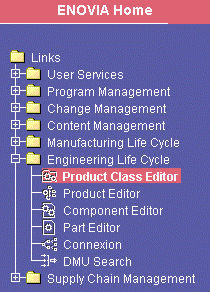
The Product Class View panel is displayed 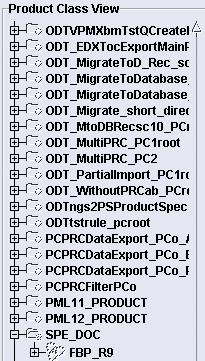
-
Select an existing Product Class Root (PRC) in our example FBP_R9
-
Right-click the PRC (FBP_R9) and select Send To > CATIA V5 from the contextual menu displayed
The document is loaded in CATIA V5 but the instances are not. 
-
In CATIA V5, click Connect/Disconnect
 from the DMU Space Engineering toolbar: The icon changes in
this:
from the DMU Space Engineering toolbar: The icon changes in
this:

-
Create a .CATPart document in your PRC.
For this: - Select New Part
 in Product Structure
workbench
in Product Structure
workbench - Select a reference plane
- Swap to the Sketcher workbench

Refer to: - Part Design User's Guide to obtain detailed information on how to create CATPart documents
- Inserting a New Part in the Product Structure User's Guide
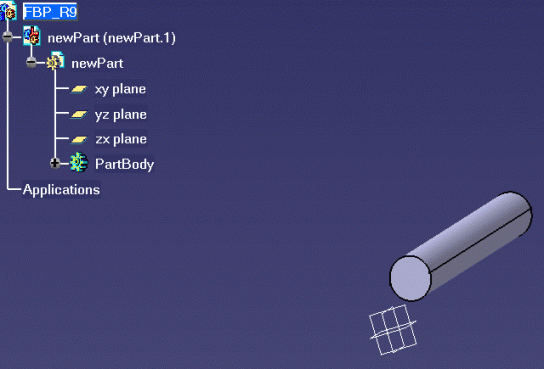

Double-click the PRC in the specification tree to swap to Product Structure workbench if necessary - Select New Part
-
Click Force Computation
 the DMU Space Engineering toolbar to launch the calculation.
the DMU Space Engineering toolbar to launch the calculation. What happens?
The new created part is sent to DMU Space Engineering server. Space Engineering Assistant server launches a proximity query searching for clashes (to detect how this new part impacts the existing PRC instances)
An hourglass appears on the connection icon showing the calculation is in progress 
-
Click Browse Clash Result with committed models
 .
The Check Clash dialog box is displayed.
.
The Check Clash dialog box is displayed. -
Select the clash of interest in the results list. By default, results are organized by conflict in the List by Conflict tab.
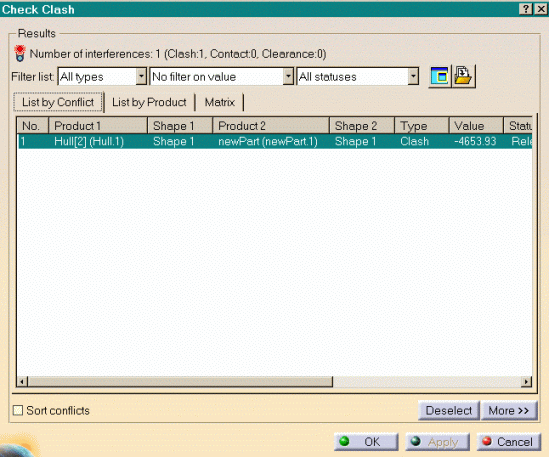
-
(Optional) Select the Sort conflicts checkbox to display the conflicts associated with each and every product. There may be more than one conflict per product. Let's take a simple example.
You run an interference analysis on the three products (P1, P2, P3) below: 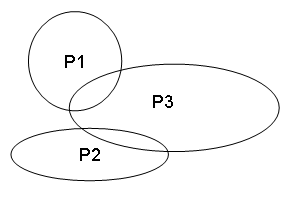
Two interferences are displayed by default: (between: P1 P3 and P2 P3) 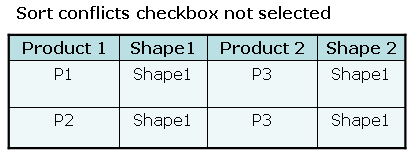
Now, if you want to display the conflicts associated with each product (combinations: P1 P3, P3 P1, P3 P2 and P2 P3) select the Sort conflicts checkbox:
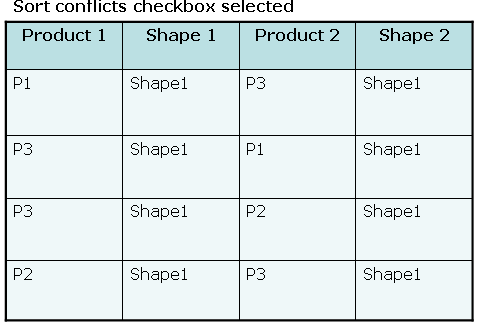
The preview window is displayed. 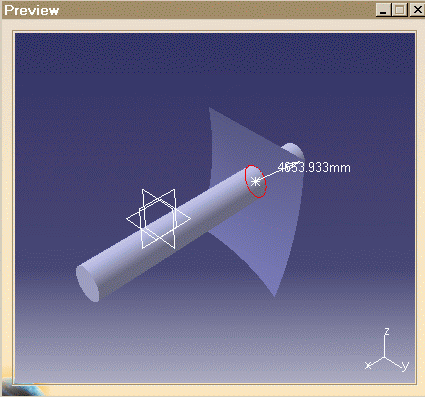
The parts in clash are automatically loaded in CATIA V5. In our example, only the Hull .CATPart document is loaded. 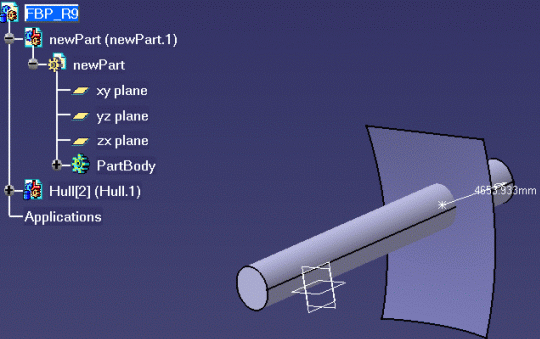
-
Click Save Data in ENOVIA V5 Server
 to save the data in ENOVIA
LCA.
to save the data in ENOVIA
LCA.What happens?
This operation launches a last clash computation to check the clash result is still relevant (i.e. other users can have performed modifications impacting the PRC). The Save in ENOVIA V5 dialog box opens: -
Click Ok to perform the operation.
-
Check the clash results are saved in ENOVIA. Please refer to "Searching Clashes by Item Instance Selection" in Product Interference Management User's Guide.

Do not forget to a save in ENOVIA for this, in Product Class Editor, click  .
. -
Close your PRC in CATIA (in our example FBP_R9).
-
Now, reopen your PRC in CATIA: right-click the PRC (FBP_R9) and select Send To -> CATIA V5 from the contextual menu displayed.
-
Select the Hull Product to search for interferences.
-
Click Browse Clash result involving a selected product
 .
The Check Clash dialog box appears displaying all the related
clashes previously stored.
.
The Check Clash dialog box appears displaying all the related
clashes previously stored.About Browse Clash result involving a selected product capability
This command lets you search for interferences related to one (or more) selected product (s)
The Check dialog box only displays the interference results related to the selected product (s)How does it work?
This filtered list is the result of a comparison between the currently stored interferences in database and the interferences detected in your current working session. When exiting the command, a reset action is performed on the filtered list. Next time, you review your interference results using the  , the list will be complete (the clashes related to the entire
session will be displayed).
, the list will be complete (the clashes related to the entire
session will be displayed).
Important
If you create a Part document in LCA database without saving it, when sent to SPE, this Part will not be seen as a new.
![]()
